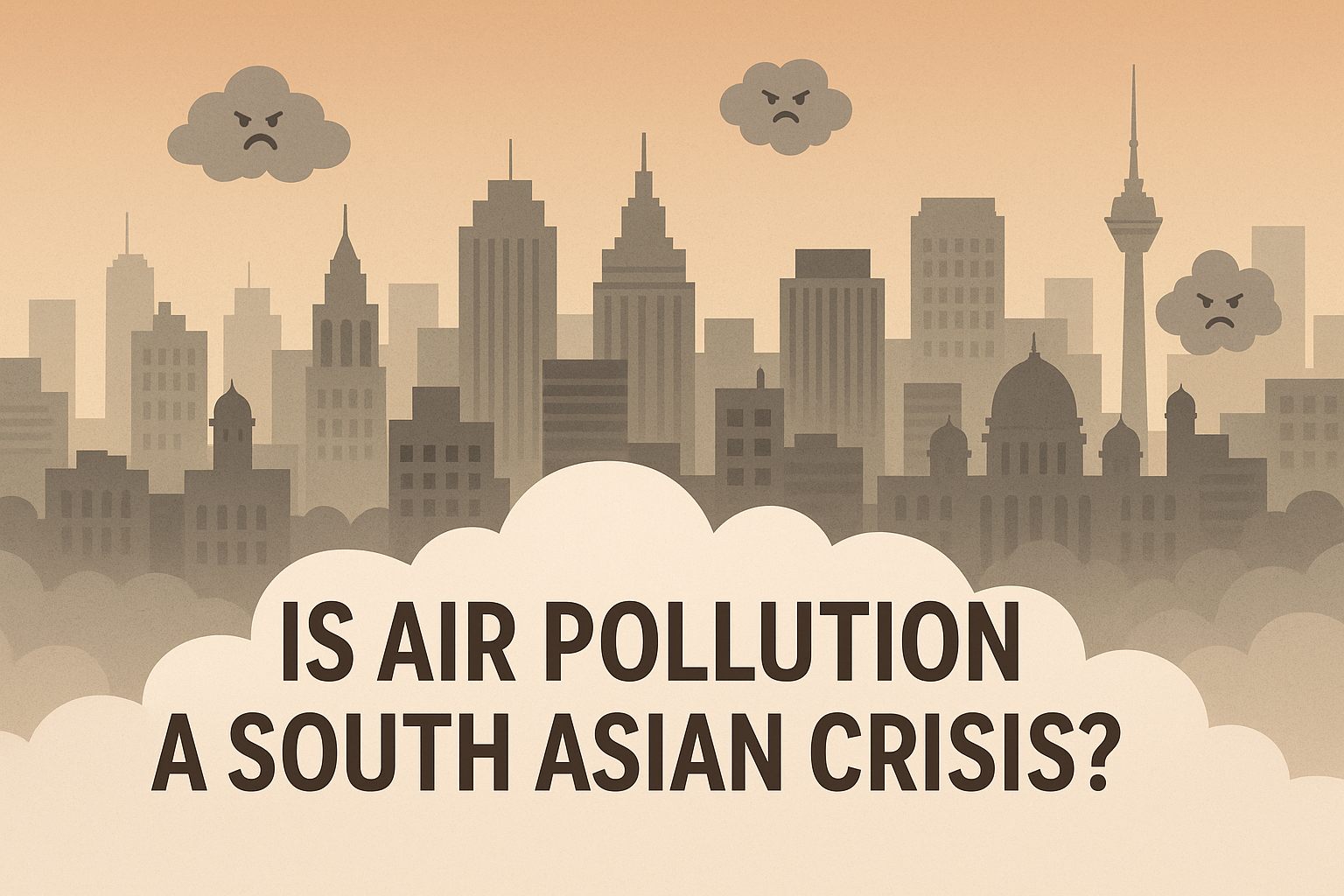Is air pollution a South Asian crisis?
The Hindu

1. Key Arguments Presented
The article argues that:
1. Air pollution is no longer just an India-specific problem but a regional South Asian crisis, exemplified by the severe 2024 India-Pakistan smog episode.
2. Both anthropogenic and natural factors (industrial emissions, vehicular pollution, meteorological patterns, geography) drive extreme and persistent AQI deterioration.
3. Economic implications are severe—India loses around 3% of its GDP annually due to pollution-related health costs and productivity losses.
4. Governance gaps, cross-border inaction and inadequate mitigation worsen the crisis.
5. A regional approach is needed, with political cooperation, technological transitions and strict pollution governance.
2. Author’s Stance
The authors take a strongly evidence-based, public-health-oriented stance, emphasising:
· Pollution as a systemic developmental failure, not just an environmental issue.
· The need for multi-country coordination, especially India-Pakistan-Bangladesh, given shared meteorology and geographical basins.
· The urgency of governance reform, citizen advisories, and long-term structural measures.
The tone is alarmist but justified because of data-backed references to WHO, UNEP, World Bank, and the Lancet.
3. Possible Biases
1. Over-emphasis on governance failures without equal attention to improvements in India’s clean fuel transition, Delhi’s GRAP measures, BS-VI vehicle norms, or renewable energy expansion.
2. The article views the crisis primarily through the lens of environmental justice, which, while valid, may underrepresent economic trade-offs involved in rapid industrialisation.
3. Cross-border political complexities (India-Pakistan tensions) are underexplored, though they significantly affect regional cooperation.
STRUCTURED ANALYSIS
A. Pros
1. Highlights AQI deterioration using scientific evidence and high-quality sources.
2. Connects air pollution with public health, economic productivity, and environmental justice—useful for a holistic UPSC perspective.
3. Recognises cross-border nature of South Asian pollution, breaking the usual India-centered narrative.
4. Suggests multi-sectoral policy tools—transport reforms, industrial controls, waste management, better governance.
B. Cons
1. Less focus on sector-wise emission contributions (transport, industry, household fuels, agriculture) that could provide actionable insights.
2. Underplays recent improvements in Indian policy (NCAP, smog towers, crop residue management initiatives).
3. Limited discussion on technological innovation such as EV transition, green hydrogen, carbon markets, or early warning systems.
4. Policy Implications
For India (Domestic Policy)
· Strengthening NCAP 2.0 with enforceable targets and penalties.
· Modernising urban transport and drastically reducing vehicular dependence.
· Moving agricultural states toward sustainable residue management to reduce winter smog.
· Enhancing industrial compliance, especially in NCR, through real-time emission monitoring.
· Increasing investments in public health infrastructure to reduce pollution mortality impacts.
For the Region (International Policy)
· Need for a South Asian Clean Air Accord similar to the ASEAN Haze Agreement.
· Joint satellite monitoring, emission mapping and coordinated emergency responses.
· Shared climate financing mechanisms for clean energy transition in poorer neighbours
5. Real-World Impact Assessment
· Economic Loss: India loses over 3% of GDP due to lost labour output and healthcare spending.
· Health Crisis: Significant increase in premature mortality, respiratory disorders, and lifelong diseases in children.
· Migration Pressures: Rising pollution may push internal migration from severely polluted cities like Delhi.
· Developmental Risks: Pollution threatens India’s global investment attractiveness and urban liveability rankings.
6. Alignment with UPSC GS Papers
GS Paper 1:
· Urbanisation, demographic vulnerabilities, human geography, climatic patterns.
GS Paper 2:
· Governance, environmental regulation, cooperative federalism, international cooperation.
GS Paper 3:
· Environment and Ecology, climate change, disaster management, pollution control, sustainable development, technology solutions.
GS Paper 4:
· Ethical issues of environmental justice and intergenerational equity.
7. Balanced Summary
The article effectively underscores that air pollution in South Asia is a transboundary, structural and socio-economic crisis, far beyond localised smog episodes in Delhi or Lahore. It warns that both natural meteorological patterns and unchecked anthropogenic activities have created a near-permanent pollution trap across the region. While governance failures and lack of regional coordination remain major challenges, the article could have provided a more balanced view by acknowledging India’s ongoing mitigation efforts.
8. Future Perspectives
1. Regional cooperation must become a central strategy, with shared monitoring systems, joint research, and cross-border emission protocols.
2. India needs long-term urban planning—compact cities, improved public transport, and reduced vehicular dependence.
3. Agriculture must transition to cleaner residue management technologies.
4. Industrial decarbonisation, including green energy, market-based emission trading, and strict monitoring, will be critical.
5. Public health systems need strengthening to address the rising burden of pollution-related illnesses.
The future will depend on whether South Asian countries can see air pollution not as a political issue but as a collective existential challenge demanding scientific cooperation and sustainable development strategies.
